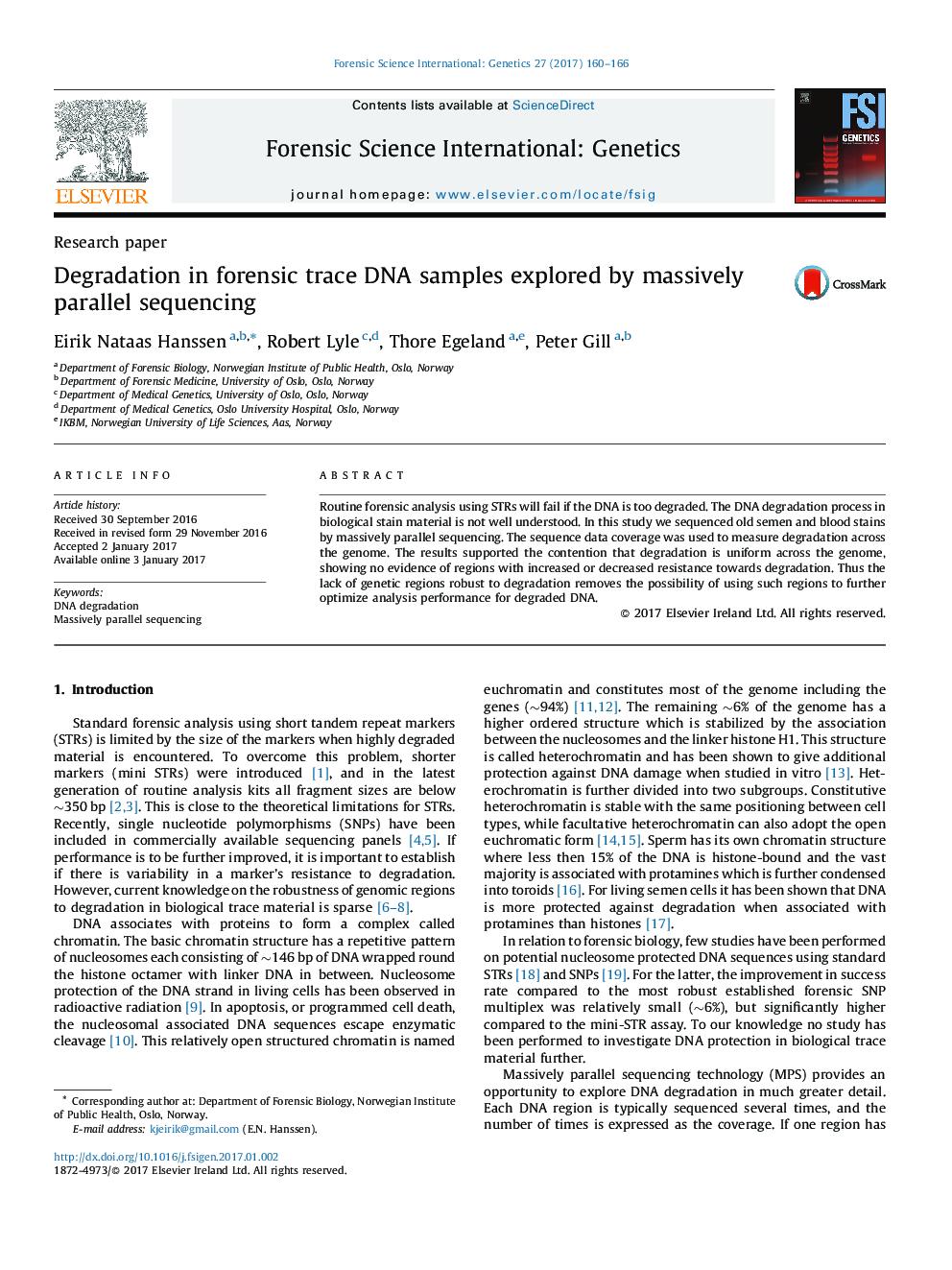| Article ID | Journal | Published Year | Pages | File Type |
|---|---|---|---|---|
| 6462917 | Forensic Science International: Genetics | 2017 | 7 Pages |
â¢We successfully performed whole genome sequencing on old and heavily degraded forensic DNA trace material.â¢Coverage data was used to measure degradation levels in different genomic regions.â¢The data supports that DNA degradation is uniform throughout the genome.â¢Our findings have implications for future efforts to improve analysis performance for degraded DNA in forensic casework.
Routine forensic analysis using STRs will fail if the DNA is too degraded. The DNA degradation process in biological stain material is not well understood. In this study we sequenced old semen and blood stains by massively parallel sequencing. The sequence data coverage was used to measure degradation across the genome. The results supported the contention that degradation is uniform across the genome, showing no evidence of regions with increased or decreased resistance towards degradation. Thus the lack of genetic regions robust to degradation removes the possibility of using such regions to further optimize analysis performance for degraded DNA.
